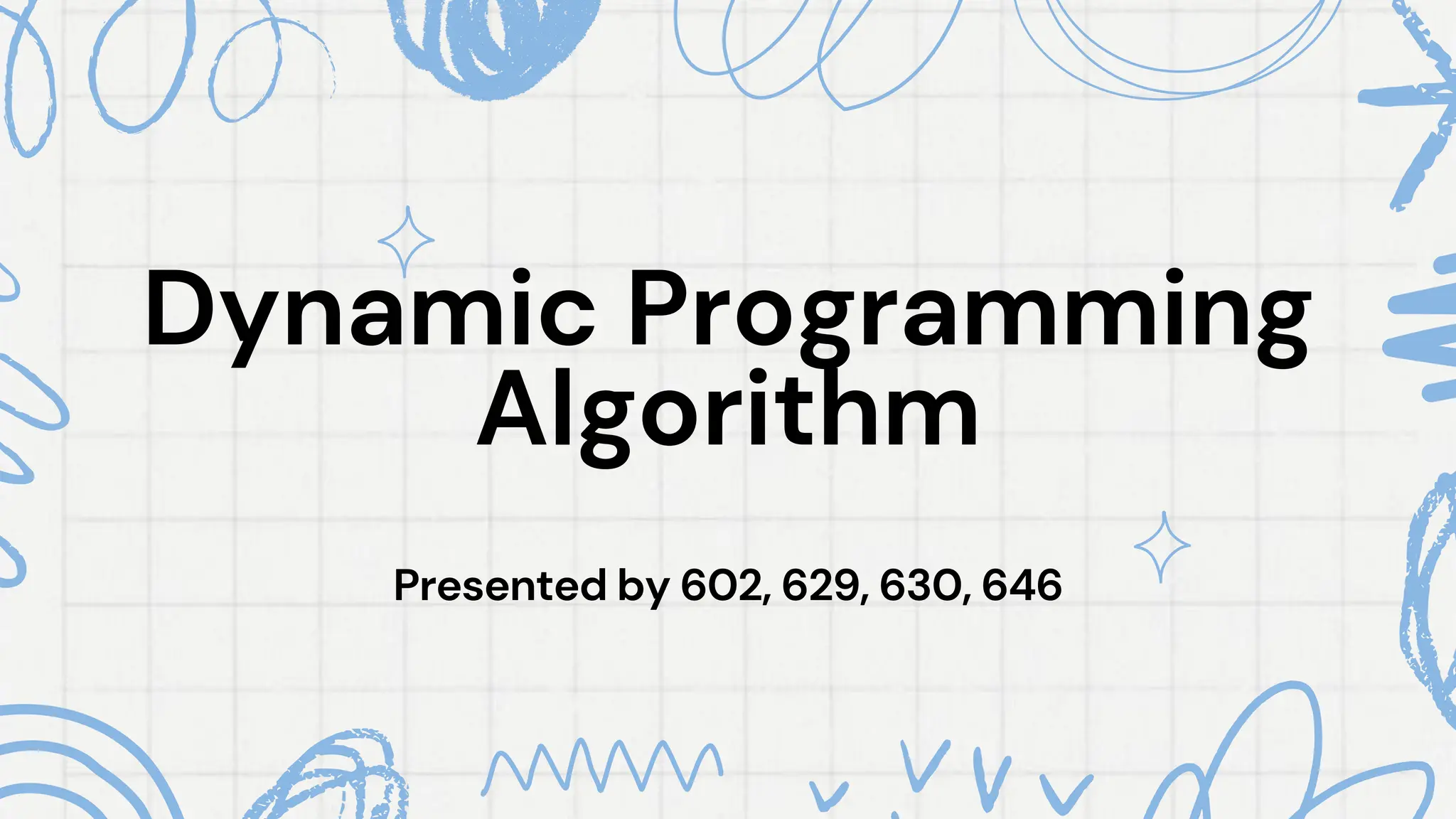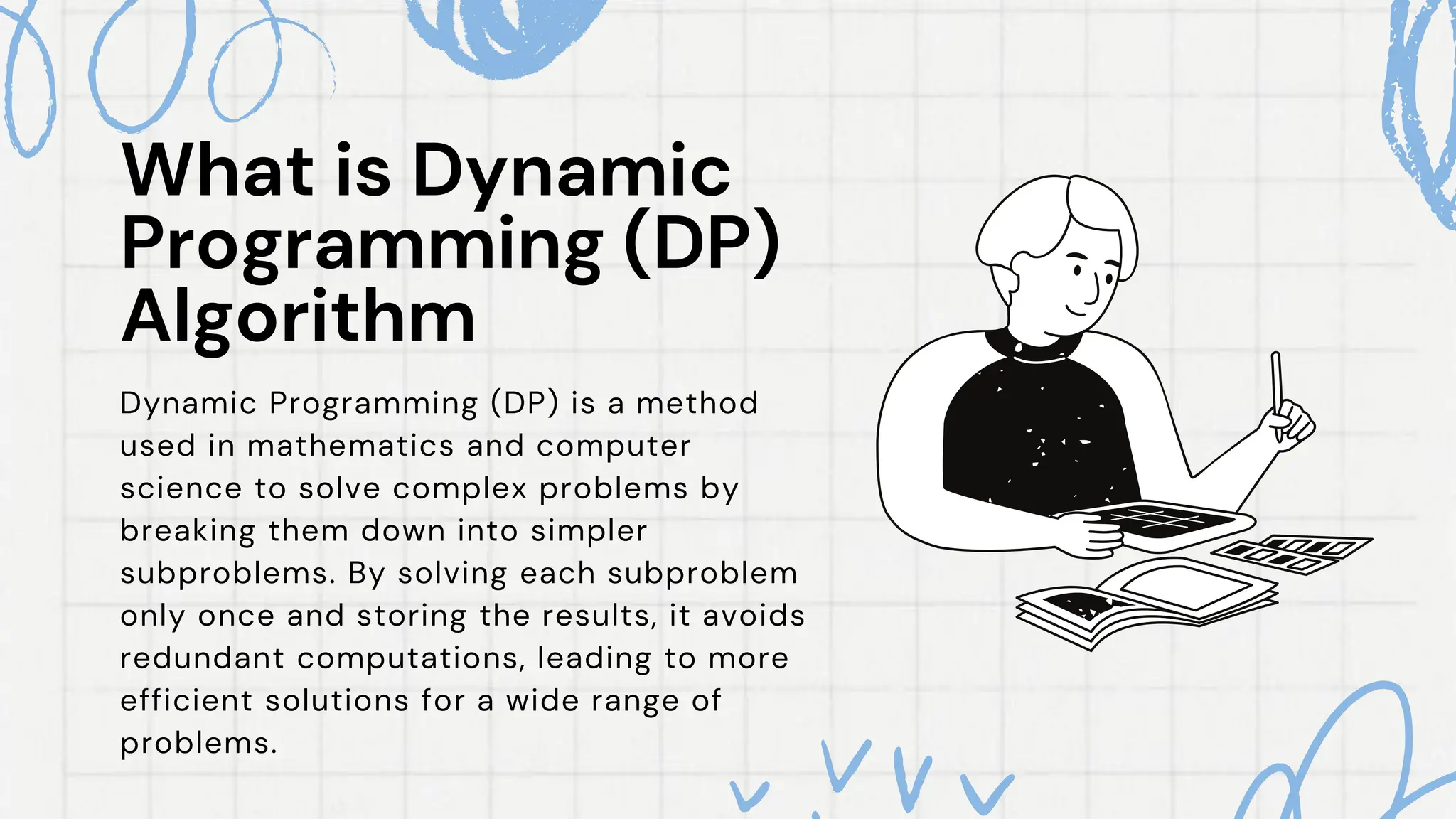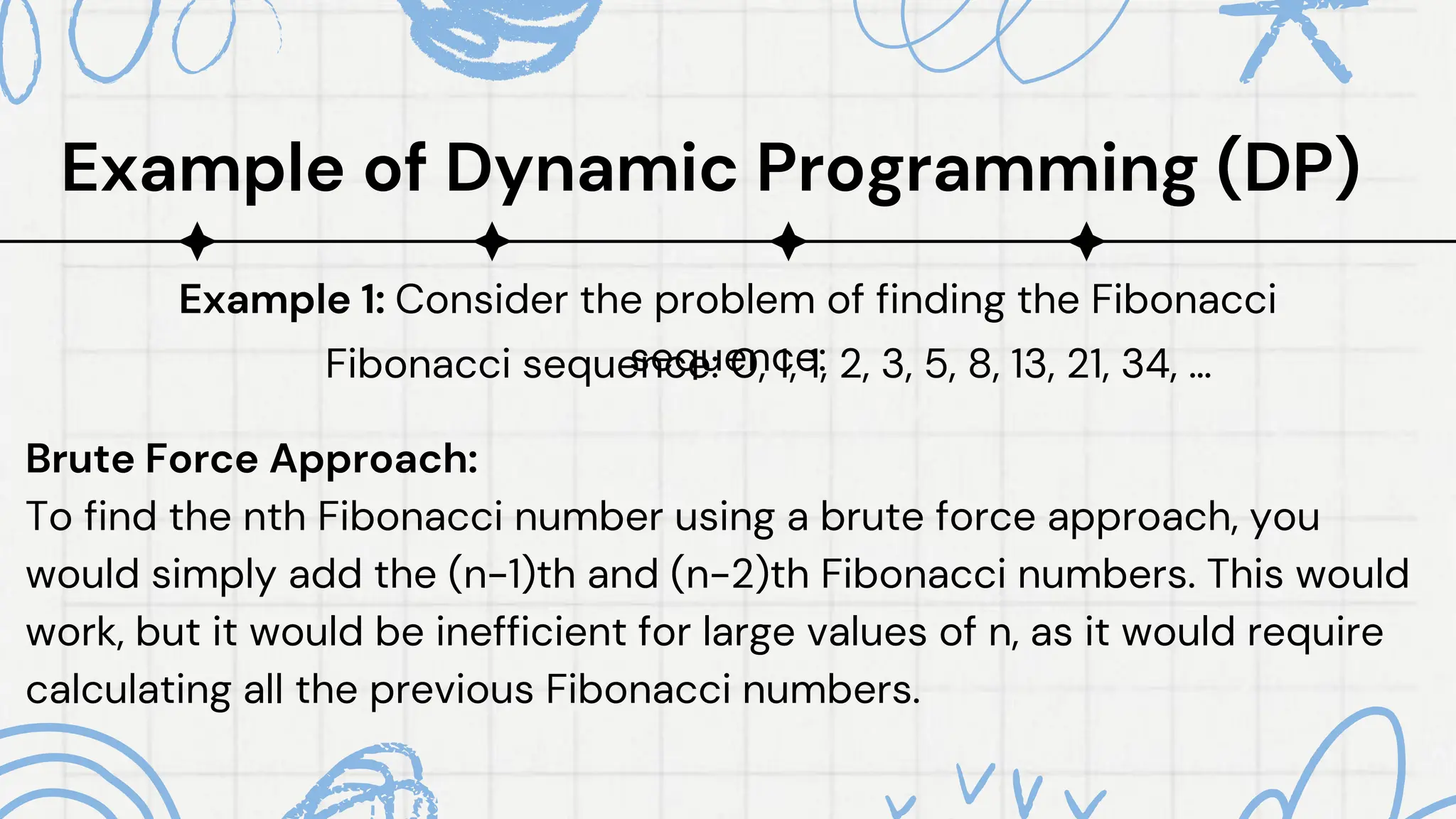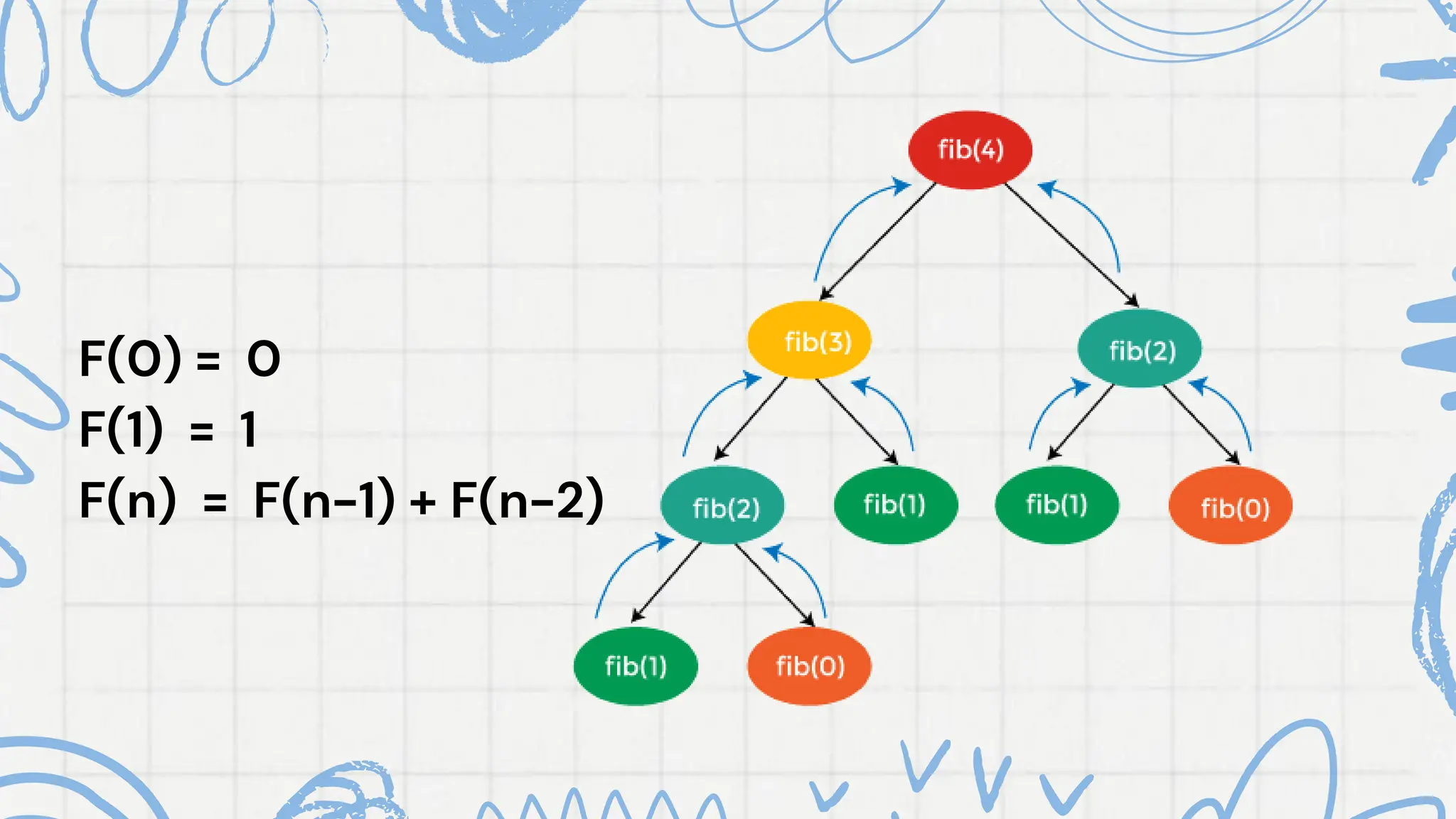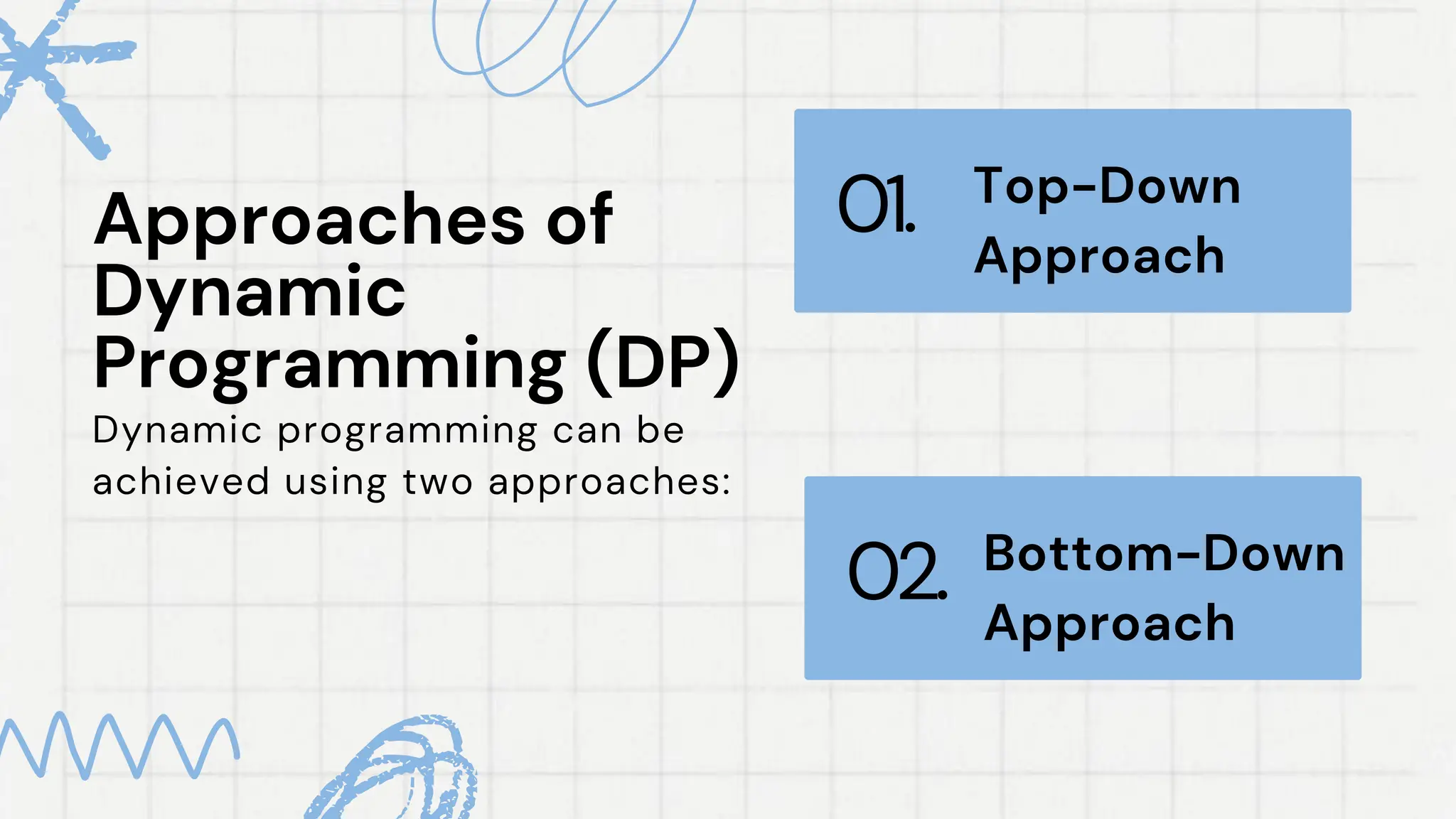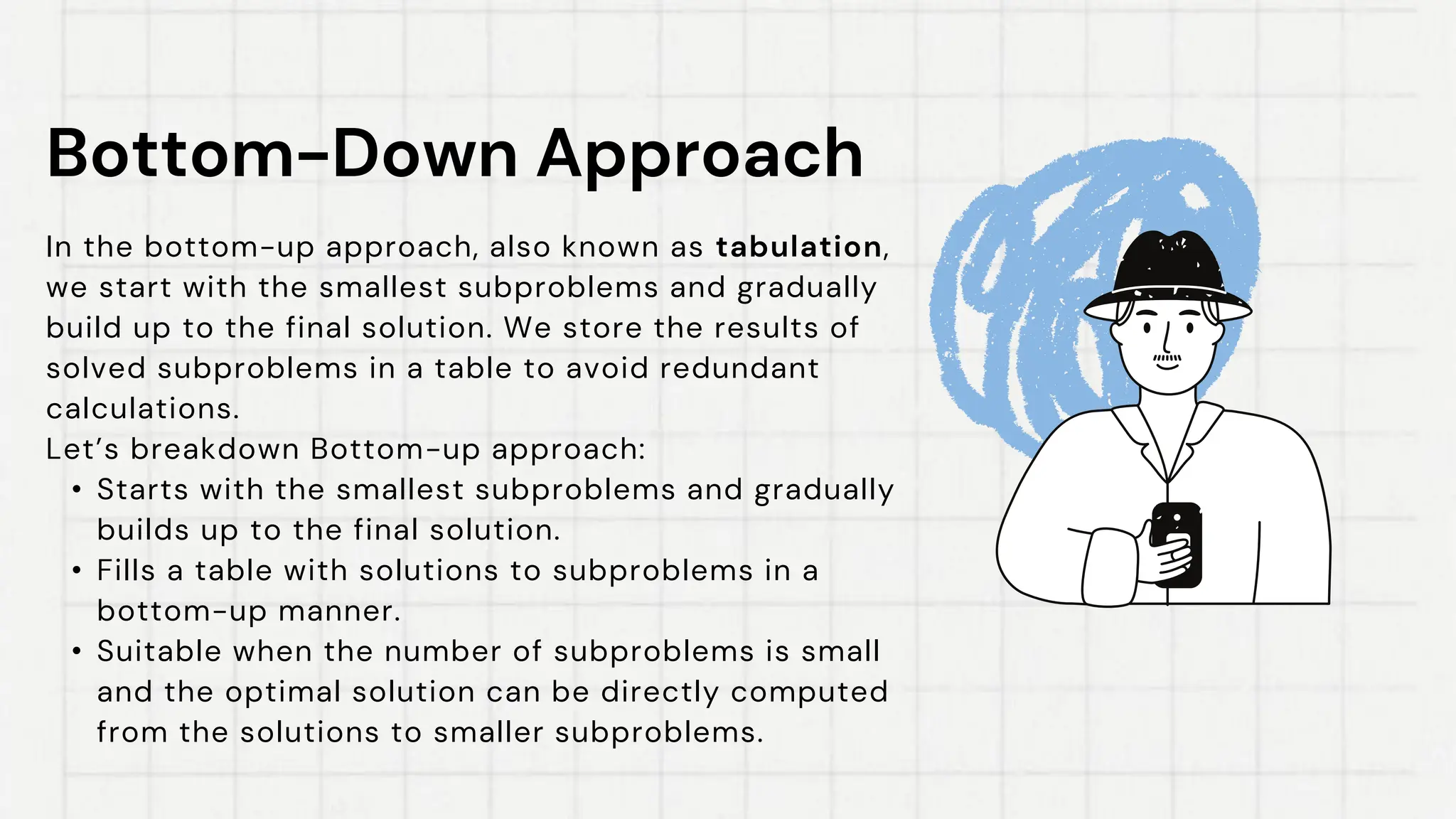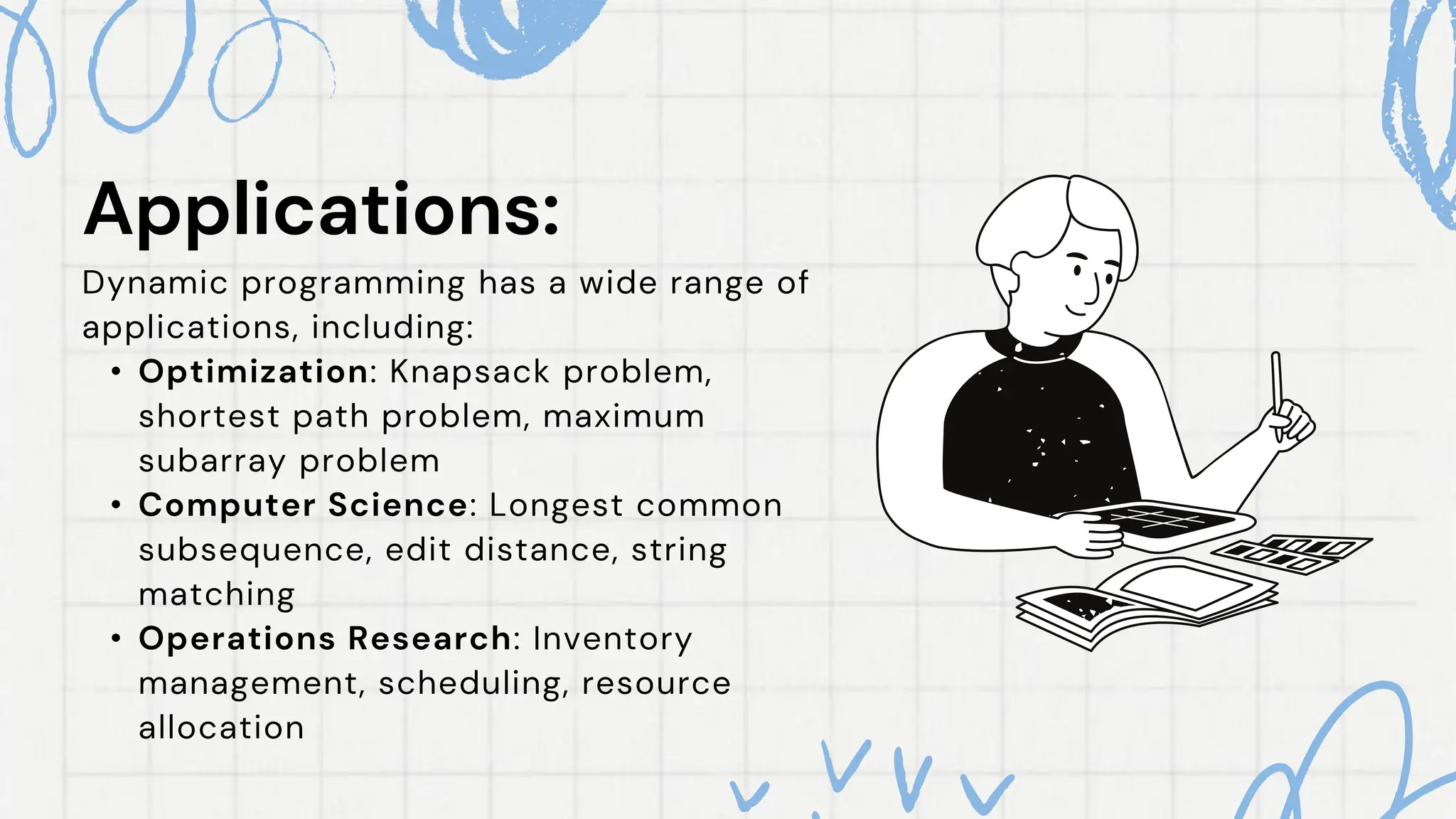Dynamic programming (DP) is a technique used to solve complex problems by breaking them into simpler subproblems, solving each only once, and storing their results to enhance efficiency. It can be applied through two main approaches: top-down (memoization) and bottom-up (tabulation), both allowing for optimal solutions without redundant computations. DP is utilized in various fields including optimization, computer science, and operations research.
